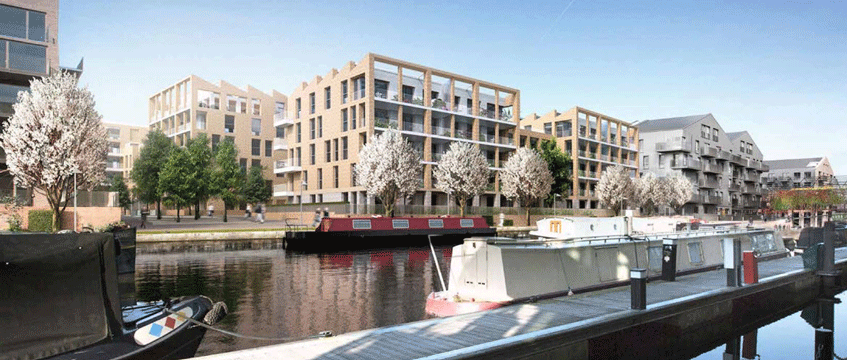COMMENT: Last month, Waterside Places, a joint venture between Muse and the Canal & Rivers Trust submitted revised plans for its Brentford Lock West scheme.
Starting construction back in 2013, phase one comprises 150 now complete homes. Another 141 homes are currently under construction making up phase two, all for the private market.
Some 229 homes remain to be built and this is where the new revised plan comes in. If Hounslow is pragmatic and gives the plans the green light, the third and final phase will deliver not 229 homes, but 452, an uplift of 239 across the entire scheme, relative to the original application.
A total of 198 build-to-rent units will also be introduced and most likely forward sold to a PRS operator.
The continued housing crisis, an acceptance from house builders to diversify tenure in order to both accelerate delivery and de-risk large sites is behind the increase. A pro-growth mayor and new punchy housing targets (even if James Brokenshire doesn’t think so) all go the way of giving developers confidence to reassert and upscale proposals.
Out with the old, in with the new
With the draft London Plan not budging over green belt, as well as giving clear indication that further loss to industrial land won’t be acceptable, the only way is up. That means increasing densities, both of new schemes yet to come through, but also crucially existing ones.
Within the current London Plan, housing output is dependent on a sites location, local character and context with a density matrix, based on public transport accessibility levels.
However, it is used as a tool and a guide rather than an absolute rule, and is often breached when “exceptional design” can be illustrated. Many have misgivings of the current system, shouldn’t exceptional design always be illustrated? And what constitutes ‘exceptional’, surely a subjective notion.
That is now by the by. Within the new draft London Plan, the density matrix is no more, having been removed entirely. Instead development proposals must make the most efficient use of land and be developed at the optimum density, with a design-led approach to determine the capacity of a site.
Brentford Lock West
For context, looking at the current London Plan and the Waterside Places site, and in particular its PTAL rating, a density range of 200-400 habitable rooms per hectare (hr/ha) is identified. The recent revised plan would see 643 hr/ha.
This is obviously a good thing. This has been done with no introduction of towers that may result in local backlash, instead sensitive densification with heights little higher than previously planned, but massing broader across the site.
London needs to build a lot more new homes. It scores way down on the density score, compared with other European cities like Paris, Madrid and Barcelona. Like those cities show, high density doesn’t necessarily mean towers and tall buildings, although for a lot people it does.
For London and its boroughs to meet housing targets, densities have to increase.
The mayor, through his emerging London Plan, has set out his stall. No loss to industrial land, no loss to green belt, while and at the same time, he has given each borough hugely ambitious housing targets.
Hounslow is expected to deliver no less than 2,182 homes per annum. That’s up from just 822 homes in the current plan.
With around 28,000 homes completing each year over the past decade on average, and around 282,000 homes lying in a state of permission, at the end of 2017, and yet to start across the 33 local authorities, according to the GLA, the opportunity is staring us all in the face.
If you can radically upscale and revise plans, increasing the number of homes, whilst fitting in to local context and character through good design, contributing 35% affordable housing, there’s a good chance the GLA will be backing your plans.
Said in the most positive way possible, back to the drawing board it is.
Paul Wellman is EG’s London residential analyst. Contact him at paul.wellman@egi.co.uk to find out more about EG residential analytics or visit Radius Data Exchange.











